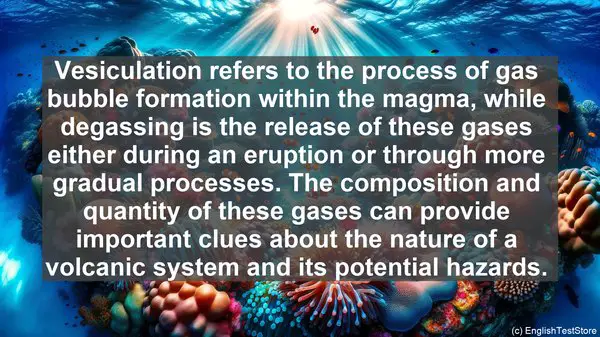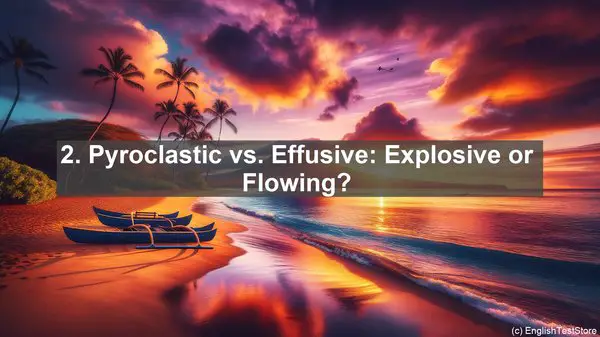Introduction: The Language of Volcanic Petrology
Welcome to our lesson on the top 10 commonly confused words in volcanic petrology. As with any scientific discipline, volcanic petrology has its fair share of technical terms and jargon. However, mastering these words is essential for effective communication and comprehension within the field. So, let’s get started!
1. Magma vs. Lava: The Crucial Distinction
One of the most fundamental distinctions in volcanic petrology is between magma and lava. While both refer to molten rock, magma is the term used when the molten material is beneath the Earth’s surface, while lava is the term used when it reaches the surface. This seemingly simple differentiation can have significant implications for our understanding of volcanic processes and the resulting rock formations.
2. Pyroclastic vs. Effusive: Explosive or Flowing?
When it comes to volcanic eruptions, two contrasting terms often arise: pyroclastic and effusive. Pyroclastic eruptions are explosive, characterized by the ejection of fragmented material, such as ash, pumice, and volcanic bombs. In contrast, effusive eruptions are relatively calm, with the lava flowing steadily. Understanding the distinction between these eruption types is crucial for hazard assessments and predicting volcanic behavior.
3. Tephra vs. Tuff: From Airborne to Deposited
During volcanic eruptions, various materials can be ejected into the atmosphere. Two common terms used to describe these airborne particles are tephra and tuff. Tephra refers to any solid material, regardless of size, that is ejected during an eruption. Tuff, on the other hand, specifically refers to the consolidated, or lithified, deposits of volcanic ash. These deposits can provide valuable insights into past volcanic activity and environmental conditions.
4. Pluton vs. Batholith: Intrusive Igneous Features
Intrusive igneous features, such as large bodies of magma that solidify beneath the Earth’s surface, are often referred to as plutons or batholiths. While these terms are sometimes used interchangeably, there is a subtle distinction. A pluton is a general term for any large, intrusive body, while a batholith specifically refers to a large, dome-shaped pluton. These features play a crucial role in the formation of volcanic arcs and mountain ranges.

5. Caldera vs. Crater: The Mark of Volcanic Explosivity
After a volcanic eruption, a depression or cavity often remains at the summit. While both calderas and craters refer to these depressions, there is a difference in their formation. A crater is typically smaller and forms during a single eruption, while a caldera is larger and often forms as a result of the collapse of a volcanic edifice after a particularly explosive eruption. Calderas can be immense in size and have been the sites of some of the most catastrophic volcanic events in history.
6. Andesite vs. Basalt: Contrasting Volcanic Rocks
Volcanic rocks can vary significantly in their composition and characteristics. Two commonly encountered types are andesite and basalt. Andesite is an intermediate volcanic rock, with a composition between that of basalt and rhyolite. It often exhibits a porphyritic texture, with larger crystals, or phenocrysts, embedded in a finer-grained matrix. Basalt, on the other hand, is a mafic rock, characterized by its dark color and often dense, fine-grained texture. Understanding the differences between these rocks can provide insights into the magmatic processes occurring beneath a volcano.
7. Vesicle vs. Phenocryst: Textural Clues in Volcanic Rocks
When examining a volcanic rock, its texture can provide valuable information about its formation. Two terms often encountered in this context are vesicle and phenocryst. Vesicles are small cavities within the rock, formed by gas bubbles during the eruption. These can range in size from microscopic to several centimeters. Phenocrysts, on the other hand, are larger crystals that grew within the magma before the eruption. By analyzing the distribution and characteristics of these textural features, scientists can gain insights into the cooling and crystallization history of a volcanic rock.
8. Lahar vs. Pyroclastic Flow: Deadly Volcanic Hazards
Volcanic eruptions can pose significant hazards to both human populations and the environment. Two particularly destructive phenomena are lahars and pyroclastic flows. Lahars are fast-moving mudflows, often triggered by the rapid melting of snow and ice during an eruption. Pyroclastic flows, on the other hand, are dense, turbulent currents of hot gas and volcanic fragments. These flows can travel at incredible speeds, obliterating everything in their path. Understanding the behavior and characteristics of these hazards is crucial for effective mitigation and evacuation strategies.
9. Xenolith vs. Phenocryst: Foreign Inclusions in Volcanic Rocks
Sometimes, a volcanic rock may contain inclusions that are not derived from the same magma. Two terms used to describe these foreign inclusions are xenolith and phenocryst. Xenoliths are fragments of pre-existing rock that were incorporated into the magma as it ascended. These inclusions can provide insights into the composition and characteristics of the surrounding rock formations. Phenocrysts, as mentioned earlier, are crystals that grew within the magma. By carefully analyzing these inclusions, scientists can unravel the complex history of magma formation and ascent.
10. Vesiculation vs. Vesiculation: The Bubbly World of Volcanic Gases
Volcanic gases play a crucial role in many volcanic processes, from the initial formation of magma to the dynamics of an eruption. Two terms often encountered in the context of volcanic gases are vesiculation and degassing. Vesiculation refers to the process of gas bubble formation within the magma, while degassing is the release of these gases either during an eruption or through more gradual processes. The composition and quantity of these gases can provide important clues about the nature of a volcanic system and its potential hazards.

